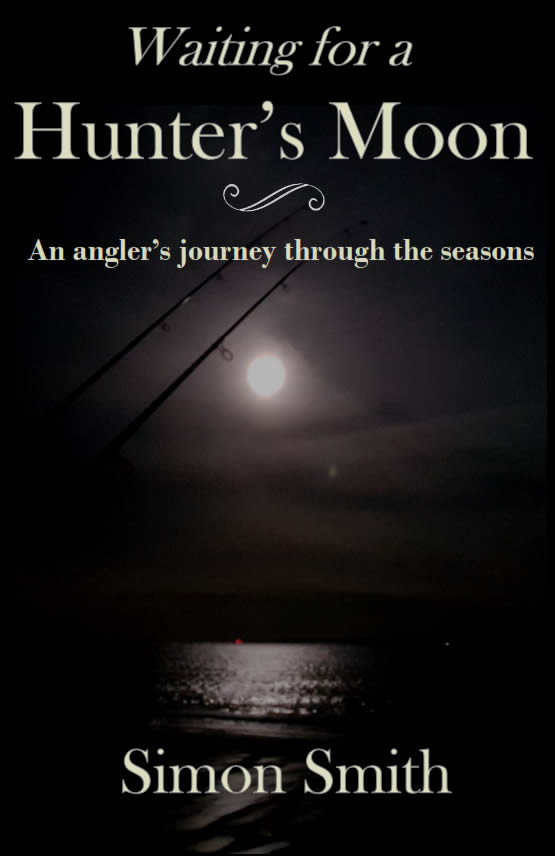There’s no sign yet. The sea is almost completely unruffled aside from an ever-changing chop where the sun has already begun working out its endless geometries – a triangular fleck of yellow here, a rhombus of white there, then gone in an instant.
The mid-range tide lacks any swell, or at least anything recognisable as swell aside, perhaps, from a just perceptible flensing of the surface until it butts up against the natural rampart of the rock promontory under my feet. I have timed my arrival to catch the ebb tide. Its lowering, like the subtle changing of so many things in life, is barely noticeable, indicated only by the marks left behind where a dark band an inch above the water tracks along the entire length of the rocks.
Still, there’s time enough to take a minute before setting up, what with today being the longest day. Yesterday’s news was full of last year’s recycled pictures of druids and new age travellers dancing and praying in front of Stonehenge, backlit by a corona. They’ll have been celebrating in Wiltshire for a few hours, but I thought I’d fritter away a few of these daylight hours and take my time this morning.
Others have chosen the same mark as me today, meaning that there are a number of us lined up hoping for an abundance – of sunshine, of scenery and, hopefully, of fish. Peaceful as this summer morning might be, I know that it isn’t entirely placid as the solstice is not the only event around here at the moment. For a week the smoke signals and jungle drums have increased in intensity, reporting running skirmishes. Snatched whispers here and odd snippets of information there all report guerrilla style smash and grab raids followed by swift disappearances all along the coast, but as the facts are carefully pieced together, a picture is emerging.
They are coming.
The tackle has been carefully selected for today, all sturdy items up to the task: durable beachcasters and high-speed reels for battling hard-fighting fish over their chosen terrain.
The tide has really started to push back now and it’s time to begin. Simply pulling the bucket toward me stimulates a chorus of tiny scratching noises – crabs. To many, when the smooth hounds arrive, the only bait worth even looking at is crab. Hermit crabs, peeler crabs, hardbacks; it doesn’t really matter as these fish are indiscriminate in their tastes. For millions of crabs every year, possibly the last thing they see is the brief passing of a shadow before they are suddenly smashed and devoured by the packs.
Over the years I have also caught them on ragworm and squid so I’m compromising to see what they’re looking for today. For the first rod I quickly cut a common hardback shore crab in half and whip both halves around the hook with elastic, ensuring an instant blast of crabby smell wafting down the tide. For the second rod I’m going for a slower more gradual approach. The empty body cavity of a squid is stuffed with smashed crab, whipped closed at the top with elastic and mounted on a pennell rig. This is punctured three or four times to allow the scents to slowly mingle and gradually seep away. Both rigs are lobbed to around seventy yards - no need for exaggerated casting styles or fancy technique here. The drags are loosened, the ratchets set and it’s simply a case of keeping watch.
Expectations always run a little high during these sessions, so it’s never a surprise when the reality doesn’t live up to the hope. Still, that still doesn’t ease the disappointment of the first two hours being fishless. The sun is blazing down through the windless air and it doesn’t take long before a soporific haze sets in and my mind absently begins to wander so that the tiniest detail can hold the attention, even though it may not be particularly interesting – a small flotilla of gulls bobbing gently on the oily water are reduced to negative background shades by an empty KP Skips packet split open, its gaudy colours reminiscent of a drowned bird of paradise.
Just a couple of hundred yards further along another angler has been set up for the last hour, and scanning across now, I can see that he’s into a fish - his beachcaster has been hooped over into its fighting curve. I watch the tussle unfold as he’s clearly forced to give line a few times; it’s a good fish and it fights him all the way.
I’m so busy watching this as though in a dream that I’m catapulted into consciousness by the sudden cry of alarm that rises from the vicinity of my own rods when a ratchet screams in alarm, its coarse vibrato tearing through the air as a fish rips line from the reel.
The smooth hound is a fish that demands respect and demands it immediately. Unlike the simply unfolding narrative of, say, the flounder bite or a float caught Pollack, hooking a smooth hound can be compared to watching an entire two-hour film in five minutes. Even the calmest temperament can fold like a cheap umbrella. Things that have been checked and double-checked before now seem ridiculously ill-prepared: I suddenly seem to be miles from my rods; gear that I thought was laid out neatly and to hand now seems to be strewn everywhere, and I almost fall over the bait bucket as I sprint, or attempt to sprint, over the uneven ground between me and the rods.
Amazingly, I make it to the rods in one piece, click the reel into gear and am instantly connected to what feels like a horse galloping in the opposite direction. The rod is nearly wrenched from my hand as I fumble with the ratchet, trying to adjust the drag as I do so. Even when I find it, it makes little difference as line continues to pour from the spool, only now the scene is muted. There is a brief lull after the initial twenty-yard run as the fish, obviously the intended target, cuts across the tide, and I am able to pump and wind under strain, carefully cranking five or six yards of line back onto the spool before the fish decides that enough is enough and takes off again. Of the seven other anglers I can see, four are also into fish; we are like greedy schoolboys trying to take our fill and more, and why not? If others haven’t come to take advantage of this glut, then it’s their loss!
Everything, every nerve, every sinew, every knot and even the hook itself comes under immense strain from this muscular wrestler of a fish. The power of a smooth hound is not easily described and has to be felt to be truly believed. Above all, it must be respected – any weaknesses are soon found out. The drag has been carefully set and the fish can take line, though I am never out of control, but this doesn’t account for the unseen dangers. Despite the higher vantage point of the rocky perch on which I’m standing, and my powerful fifteen-foot beachcaster working like a shock absorbing lever as I swing it left or right to direct the fish, there’s a teeth-jangling sensation of grating as the fish drags the line over an unseen snag.
Unexpectedly, everything goes solid for a second. Tentatively, I give the line a little tug first one way then the other in the vain hope that I can gently free the rig, when there is an abrupt surge and the rig pulls itself free, zipping back and forth in front of me again, though the runs now lack any real power.
The smoothhound is working hard now, forced to fight the rod, the reel’s drag, and the angler holding them, and another few shorter lunges all but spend the last reserves of the fish’s energy. By this time, I’m sweating hard and half-shaking with the adrenalin, but the fight is swinging in my favour.
For the first time it breaks the surface in front of me and I’m able to get a good look at it and I am struck by the similarity to Ted Hughes’ description of a pike, how every single part of it seems perfected and honed, because looking at a smooth hound is to look at nature’s own variation on the torpedo. I picture this fish as an everyfish, swimming the oceans through the millennia, the water eroding and smoothing away all superfluous edges and protuberances until it left only this. Millions of years of evolutionary trial and error focused down to the fine needlepoint in place and time that is this creature swimming in front of me at this moment, this perfection of a simple design shown off to best effect in the sleek flanks and angular lines containing a compromise between speed and raw power. Particle by particle the apex predator is sculpted rather than born.
I’m fairly high up, and the fish is still moving, so it’s hard to estimate an exact size, but it looks to be somewhere in the region of the nine-pound mark, maybe pushing double figures. By now I’m feverishly looking for a way down to the water’s edge, keeping a holding pressure on the fish, when out of nowhere there’s a sudden sickening lurch and I tumble backwards, arms wheeling, left connected to nothing but air, before tumbling onto my backside on a rough outcrop of rock. I get to my feet just in time to see the fish swirl back out to sea.
This is the gut-wrenching reality that is the lost fish. As I wind in the empty rig, I mentally run through all the possibilities in my head – had the taut line come into contact with a rock? Was one of my knots below standard? The reality was revealed when the rig hit the rocks beneath my feet and I noticed that the strong 3/0 blacked Aberdeen hook, not a cheap or weak hook by any means, was twisted out of shape, had lost its black finish in places and now resembled nothing more than the half-digested leg bones of a shrew or vole sticking out from a casually discarded owl pellet.
I don’t know whether to laugh or cry. There is some small comfort in the fact that I actually got to see the fish, but that nagging of so near yet so far…
Still, I’ve enough spare rigs, lots of crabs and there are hours of daylight left. I’ve got a feeling that this is going to be a long day.
Serialisation of ‘Waiting for a Hunter’s Moon’ by Simon Smith (with permission). This book is published by and can be purchased from Cambria Books HERE

Thanks for reading Cambria Stories! Subscribe for free to receive new posts and support my work.

